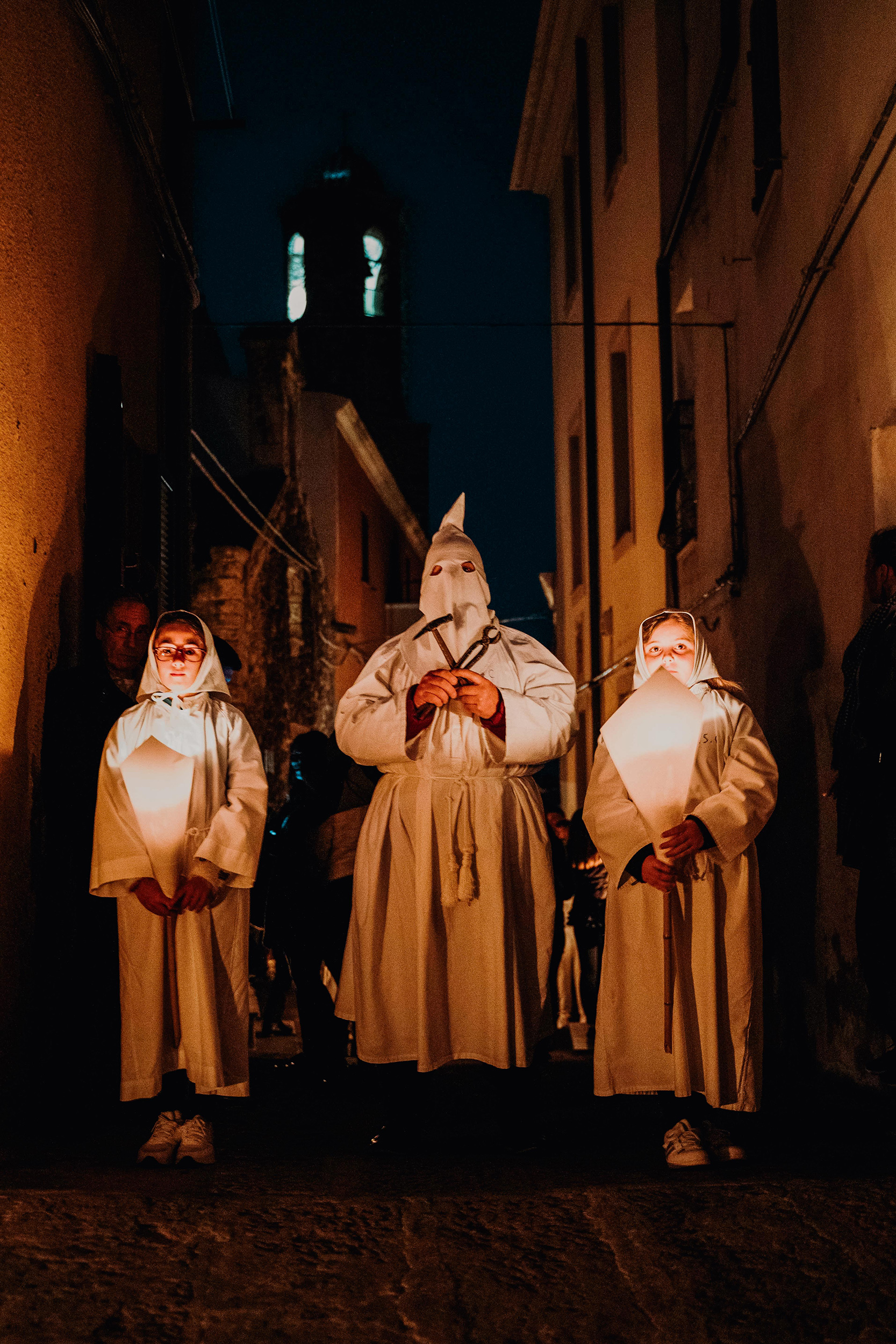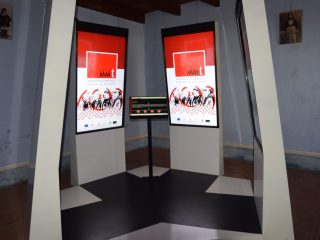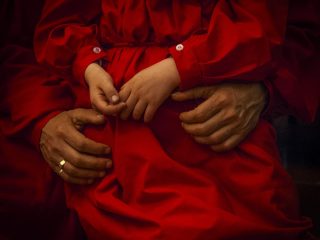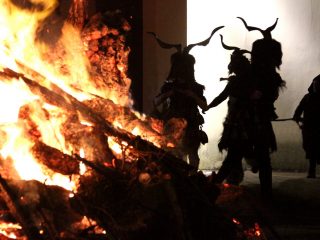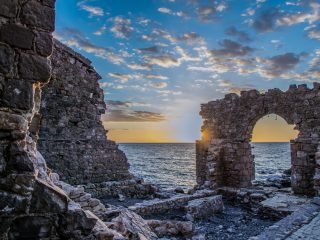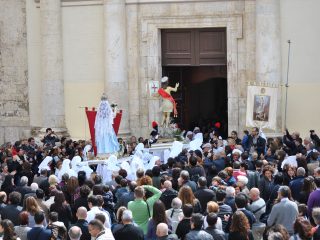Castelsardo is a small Medieval village with no more than five thousand inhabitants standing on the promontory overlooking the gulf of Asinara. Founded in 1102 by the Doria family under the name of Castel Genovese. It took on the name of Castel Aragonese when it became a città regia in 1448, following the Spanish conquest, and lastly Castelsardo in 1769 under the reign of the House of Savoy.
As with everywhere else on the island, the Holy Week rituals here bear the legacy of Spanish domination. In Castelsardo, unlike the rest of Sardinia the most important day in Holy Week is the Monday before Easter, known as “Lunissanti”. The rituals begin early in the morning on this day with mass at the altar of Cristo Nero in the church of Santa Maria.
The procession led by the “Apostles” starts from here and they carry the Misteri, that is, the instruments of the Passion of Christ; the Apostles (brothers from the Santa Croce Confraternity) wear a white robe pulled in at the waist with a string and their face is covered with a white hood. They are followed by three choirs who respectively start to sing the Miserere, the Stabat and the Jesus. The first of these is carrying a “Lu cabu di lu moltu” in their hand, or rather the skull of an unknown local person. The second one is carrying a small statue of the Ecce Homo and the third one a crucifix.
The procession ends in the basilica di Nostra Signora in Tergu, a small town not far from Castelsardo. The Misteri are displayed here in front of the altar and solemn mass is said in which the Misteri are presented to the Madonna, accompanied by “s’attitu”, the sorrow of Christ’s death. At the end of the celebration, the participants eat lunch together, out in the open, on the lawn surrounding the basilica.
In the evening, they return to Castelsardo, where the “Notti Santa” is celebrated, the most moving and evocative moment of Lunissanti. With all the lights turned off, the small squares and alleys are lit only by the torches carried by the Apostles and Chorists in the “a cuncordu” choirs, featuring four male voices. Carrying with them the Misteri and again starting to sing the Miserere, the Stabat and the Jesus, they cover every street in the old Medieval town, in semi-darkness, followed by the crowd; it is a particularly appealing ritual which takes you back in time, to the Middle Ages.


